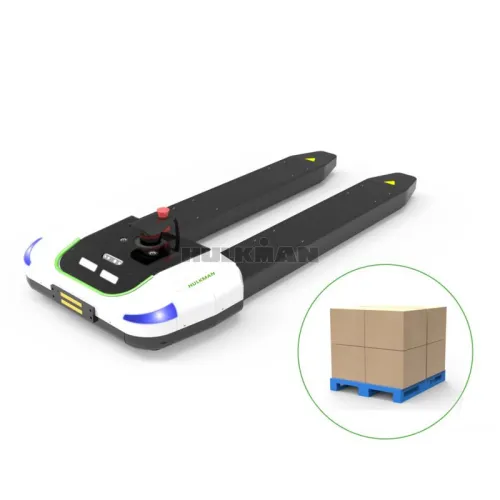When selecting the right automated material handling system, many businesses face the choice between Automated Guided Vehicles (AGVs) and Laser-Guided Vehicles (LGVs). Both technologies are pivotal in modern warehouses and factories, but understanding the differences can help make the right decision for specific operational needs.
AGVs are unmanned vehicles designed to transport materials and goods throughout a facility. They use various guidance systems, such as magnetic strips, wires, or sensors embedded in the floor, to navigate predefined paths. This makes AGVs particularly useful in industries that have repetitive tasks with fixed routes, such as manufacturing or logistics facilities.
Transporting raw materials in production plants.
Moving products in warehouses with fixed storage zones.
Repetitive tasks such as loading and unloading cargo.
AGVs are widely recognized for their flexibility in layouts and ability to easily integrate into existing operations without significant infrastructure changes.

LGVs are a specialized subset of AGVs that use laser-guided technology for navigation. Instead of following physical lines or magnetic tracks, LGVs use reflective strips placed throughout the facility. The laser system on the vehicle detects these reflectors to guide its movements with high precision.
Flexibility in route changes without needing to modify the facility’s floor layout.
Improved accuracy in navigation, especially in environments where obstacles or layout changes occur frequently.
Efficient in large, complex environments with varying paths and destinations.
LGVs are more adaptable than traditional AGVs, especially in dynamic settings where routes or storage zones may change frequently. This advanced guidance system makes them ideal for larger, high-traffic facilities where flexibility is paramount.
The cost difference between AGVs and LGVs primarily stems from the guidance system. AGVs tend to have a lower upfront cost because they use simpler, more fixed guidance methods. However, they require changes in the facility layout for each new route. On the other hand, LGVs, although more expensive upfront, offer better scalability as they don’t require physical modifications to the environment when routes change.
For facilities with predictable, repetitive tasks and a fixed layout, AGVs can be an excellent cost-effective option. They are well-suited for operations where scalability is not a major concern, and changes to the environment are minimal. However, for larger operations, or industries with frequent layout changes or variable tasks, LGVs provide better flexibility, precision, and long-term scalability, despite the higher initial cost.
Both AGVs and LGVs require regular maintenance, but the type of maintenance differs based on the guidance system. AGVs, which rely on physical tracks or wires, may experience more wear and tear due to interactions with these elements. Conversely, AGV Pallet Trucks, which use laser guidance, typically require less physical maintenance as there is no direct contact with the guidance infrastructure. However, ensuring the reflectors are clean and correctly positioned is crucial for optimal performance.
The decision between AGVs and LGVs depends largely on the operational needs of your facility. If you're running a smaller operation with minimal variability, AGVs may be the right choice for their cost-efficiency. However, for larger, more dynamic environments, LGVs offer greater flexibility, precision, and scalability, making them a better investment in the long run.
Previous: Full Trailer vs. Semi-Trailer: Key Differences
Next: Intelligent Sorting Robots Maintenance and Troubleshooting
Copyright:@2020-2021
Comments Please sign in or sign up to post.
0
0 of 500 characters used